Introduction
In the intricate world of bankruptcy proceedings, the Committee of Unsecured Creditors emerges as a vital entity, safeguarding the interests of unsecured creditors. This committee, formed shortly after a bankruptcy filing, ensures that these creditors have a significant voice in the restructuring process. As bankruptcy trends evolve with maturity extensions and distressed exchanges becoming more common, the role of this committee becomes increasingly pivotal.
This article delves into the formation, roles, responsibilities, and profound impact of the Committee of Unsecured Creditors, providing a comprehensive guide for financial leaders navigating these complex waters.
Purpose and Formation of the Committee
The Committee of Unsecured Lenders plays a crucial role in insolvency processes by representing the interests of those without secured debts. Established soon after the financial collapse submission, this group guarantees that these lenders have a substantial say in the reorganization procedure, particularly when their demands are liable to negotiation. By arranging and promoting their rights, the group assists in managing the intricacies of financial insolvency, making certain that the concerns of those without secured claims are not ignored. This representation is crucial, particularly in light of the increasing trends of maturity extensions, covenant holidays, and distressed exchanges in the financial landscape.
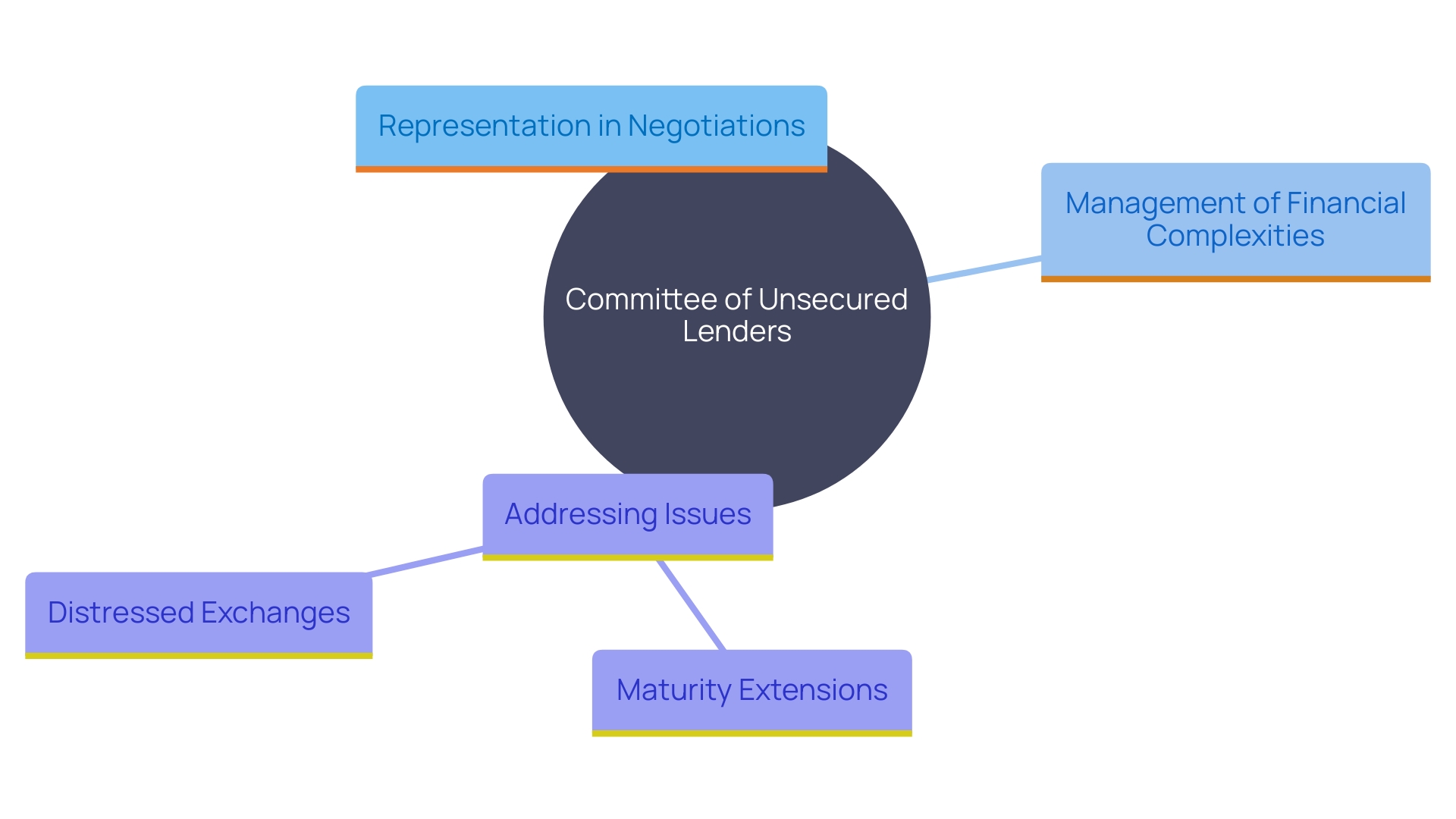
Role of the U.S. Trustee in Appointing the Committee
The U.S. The trustee plays a crucial part in the selection of the group of unsecured creditors, guaranteeing appropriate supervision and legal adherence in insolvency situations. This federal official meticulously identifies and selects eligible creditors to serve on the committee, often prioritizing those with substantial claims to guarantee robust representation. The group's endeavors can greatly affect the result of insolvency proceedings, as shown by the case of Celsius Network, LLC. After coming out of bankruptcy on January 31, 2024, Celsius's reorganization plan, created and backed by the group, was overwhelmingly approved by 98% of account holders. This plan facilitated the distribution of over US$3 billion in cryptocurrency and fiat to more than 600,000 account holders. Additionally, the creation of a new Bitcoin mining company, Ionic Digital, Inc., owned by Celsius creditors and free of funded debt, marked a notable achievement. The effective operation of the group underscores the essential role of the U.S. Trustee in navigating complex bankruptcy landscapes.
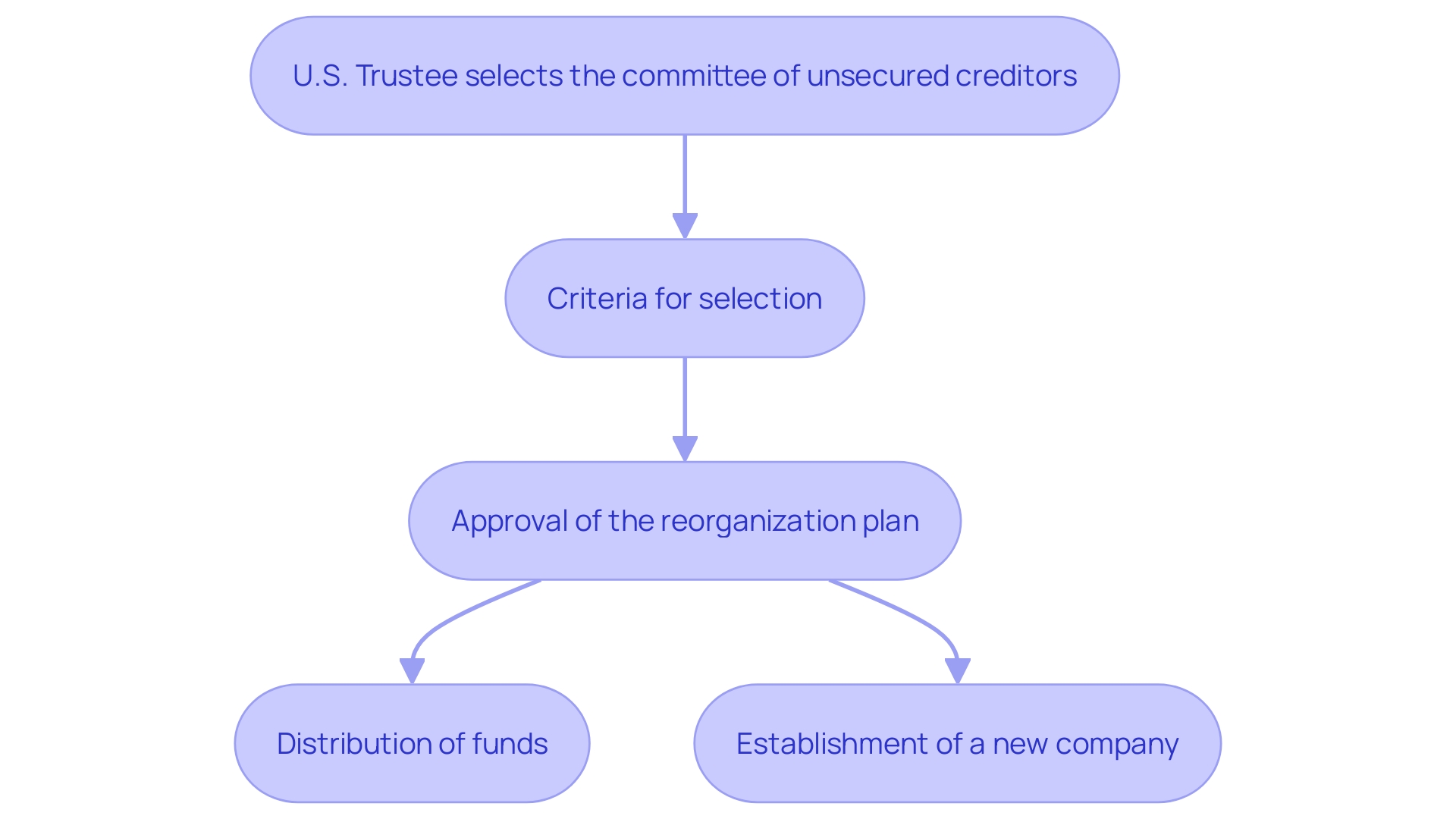
Eligibility and Selection Criteria for Committee Members
To qualify for the Committee of Unsecured Creditors, a party must possess an unsecured claim against the debtor. The selection process prioritizes the size of the claim and the lender's eagerness to engage actively in committee activities. This approach aims to create a diverse representation that reflects the broader unsecured stakeholder community's interests. The significance of diversity is also underscored in wider financial conversations, such as those from the Sec's Small Business Advisory Group, which stresses the role of diversity metrics within investment processes. This ensures that a wide array of voices and perspectives are considered, ultimately leading to more balanced and inclusive decision-making.
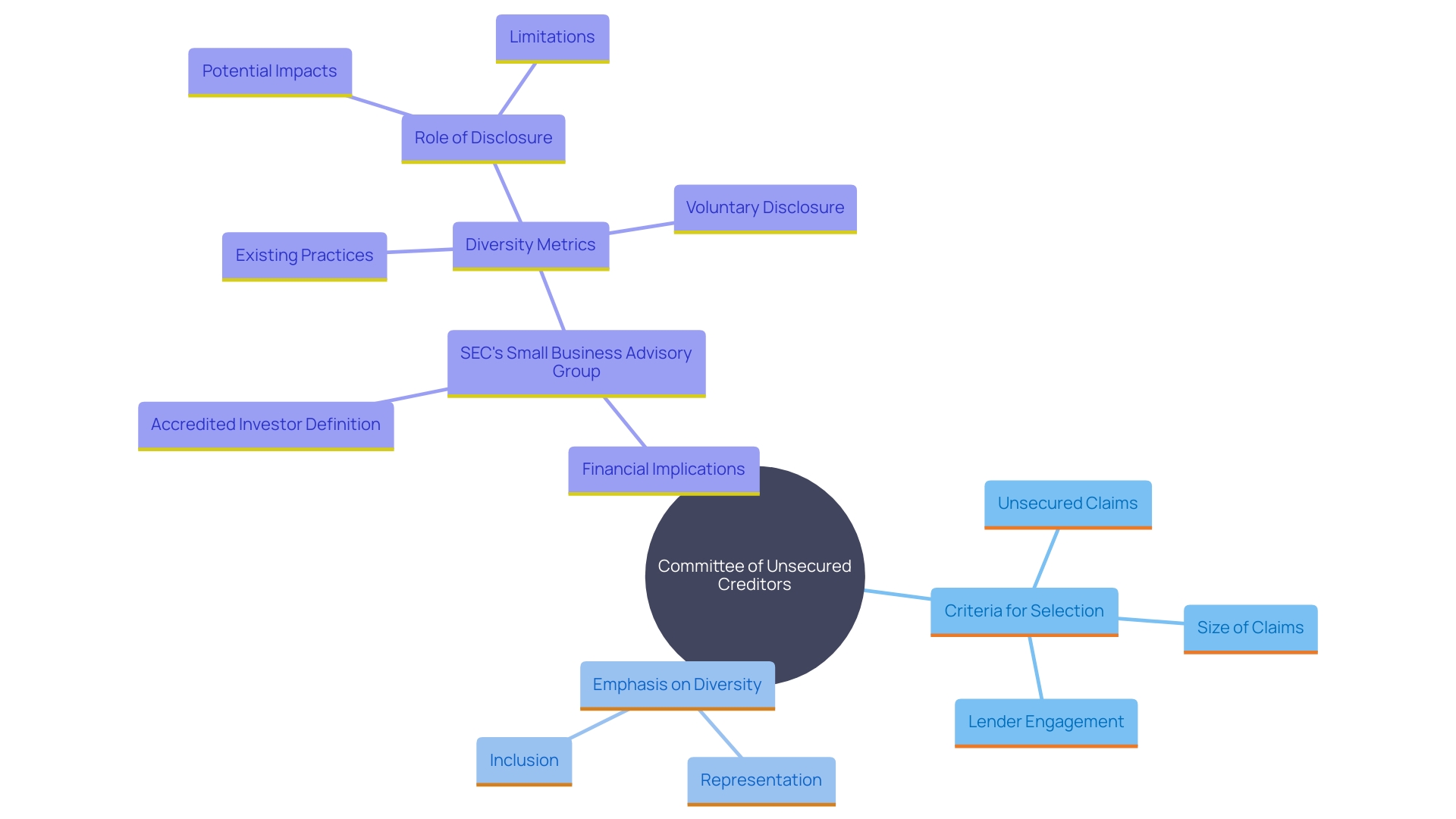
Responsibilities and Powers of the Committee
The Committee of Unsecured Lenders plays a pivotal role in the insolvency process, bearing significant responsibilities that are crucial for safeguarding the interests of unsecured lenders. The group carefully observes the debtor's operations and financial performance, ensuring that all activities align with the overarching goal of maximizing creditor recoveries. This oversight is not simply passive; it entails active involvement in the creation of a bankruptcy strategy, where the group negotiates on behalf of its members to obtain advantageous conditions.
A noteworthy aspect of the group's function is its authority to retain legal and financial advisors. This capability is essential, as it provides the group with the expertise needed to navigate complex financial restructurings and advocate effectively for creditors' interests. According to Mr. Ray, a seasoned bankruptcy practitioner, the involvement of skilled advisors can be critical in restructuring efforts, especially in cases involving significant corporate failures.
Furthermore, the group's involvement in negotiations can result in creative solutions that go beyond simple financial recoveries. For instance, in mass tort and opioid litigation cases, the discovery process has unearthed crucial evidence about company misconduct, propelling legislative changes and holding manufacturers accountable. Such outcomes highlight the broader impact of the group's work, extending beyond financial settlements to effectuate meaningful policy advancements.
The group's actions are also influenced by the changing environment of insolvency legislation and policy. The American Bankruptcy Institute (ABI) offers financial assistance and reduced rates for government employees, professors, law clerks, and students, ensuring that the committee's members and advisors can access necessary educational resources. This commitment to education and professional development reflects the ongoing evolution of the restructuring field, where innovative approaches and robust discussions are continually shaping best practices.
In summary, the group of Unsecured Creditors is a vital entity in the bankruptcy process, wielding considerable influence through its oversight, negotiation, and advisory functions. Its efforts not only aim to maximize lender recoveries but also contribute to broader legal and policy reforms, underscoring its multifaceted role in corporate restructurings.
Fiduciary Duties of Committee Members
Members of the Unsecured Creditors Group carry significant fiduciary responsibilities, prioritizing the interests of all unsecured creditors with utmost loyalty and care. This duty of loyalty demands that members steer clear of conflicts of interest, and transparently disclose any factors that might compromise their impartiality. Moreover, they must exercise due diligence in their decision-making, ensuring actions are well-informed and prudent. This mirrors the principles highlighted by SEC Chair Gary Gensler in recent governance reforms aimed at reducing conflicts of interest within clearing agencies. The emphasis on board independence and stakeholder consideration resonates with the committee's obligation to uphold integrity and trust within their fiduciary roles.
Professional Assistance and Compensation
The Committee often utilizes the expertise of legal and financial experts to navigate the complexities of insolvency proceedings. With the increasing complexity of insolvency cases, such as those involving cryptocurrency like FTX, the associated legal fees can become substantial. Lawyers, in these scenarios, often need to spend extensive hours addressing emerging areas of the law and responding to objections raised by stakeholders, including the US Trustee. Although the expenses for these services can be significant, they are usually included in the insolvency estate. This arrangement ensures that the committee can operate effectively without imposing additional financial burdens on its members. Significantly, a 2007 study commissioned by the American Bankruptcy Institute emphasized that the highest hourly rate charged by a debtor's attorney is a major predictor of total financial distress expenses.
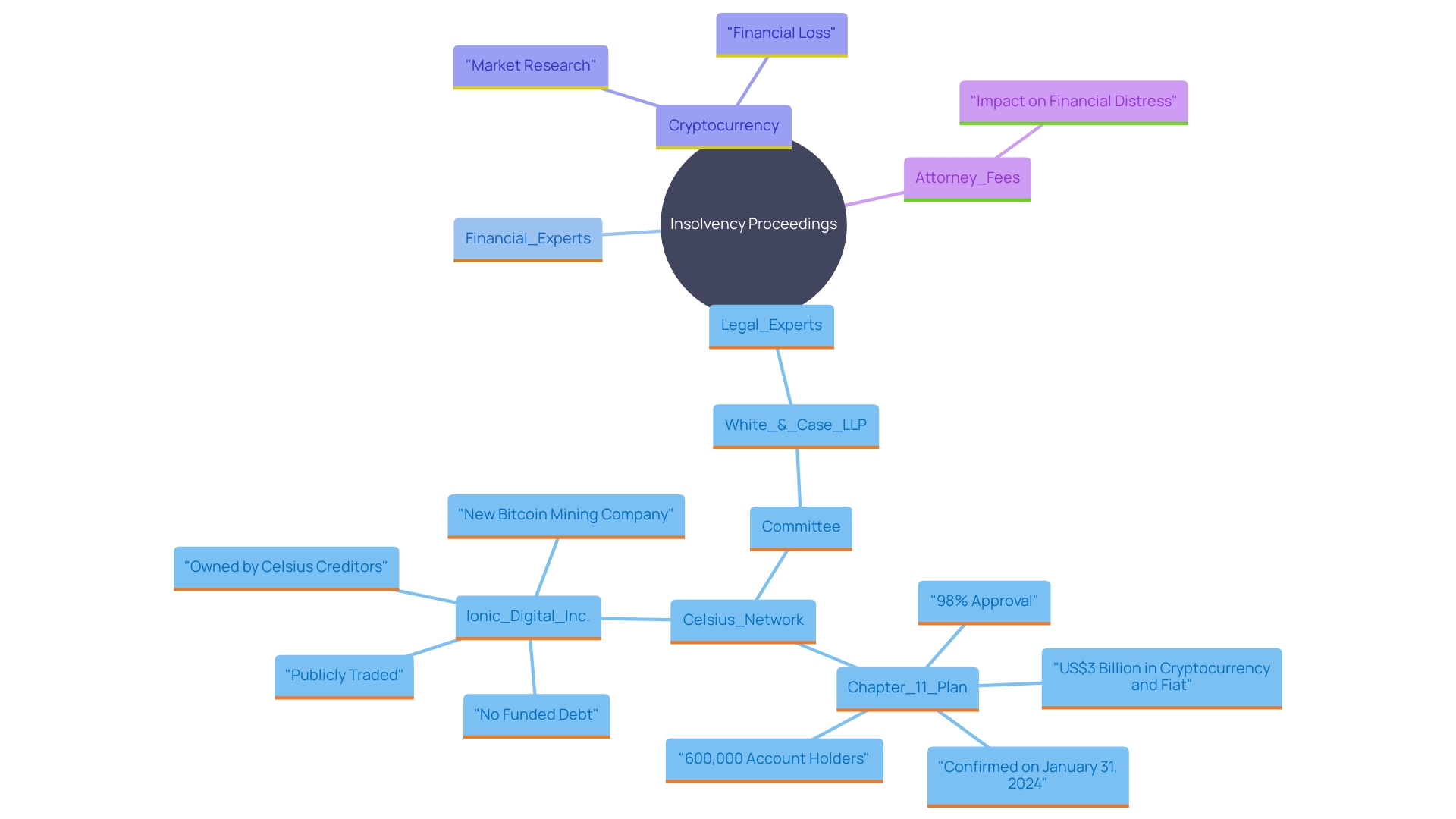
Key Activities and Decision-Making Processes
The Committee of Unsecured Creditors plays a pivotal role in the restructuring process by engaging in activities such as attending crucial meetings, scrutinizing financial documents, and negotiating with the debtor. These responsibilities are crucial, particularly considering the rising instances of maturity extensions, covenant holidays, missed interest payments, distressed exchanges, and insolvency filings in sectors like consumer goods. Decision-making within the committee involves thorough discussions and consensus-building among members, ensuring that outcomes reflect the collective interests of all unsecured creditors. This collaborative approach helps mitigate financial risks and uncertainties, providing a stable foundation for addressing the complexities of insolvency proceedings.
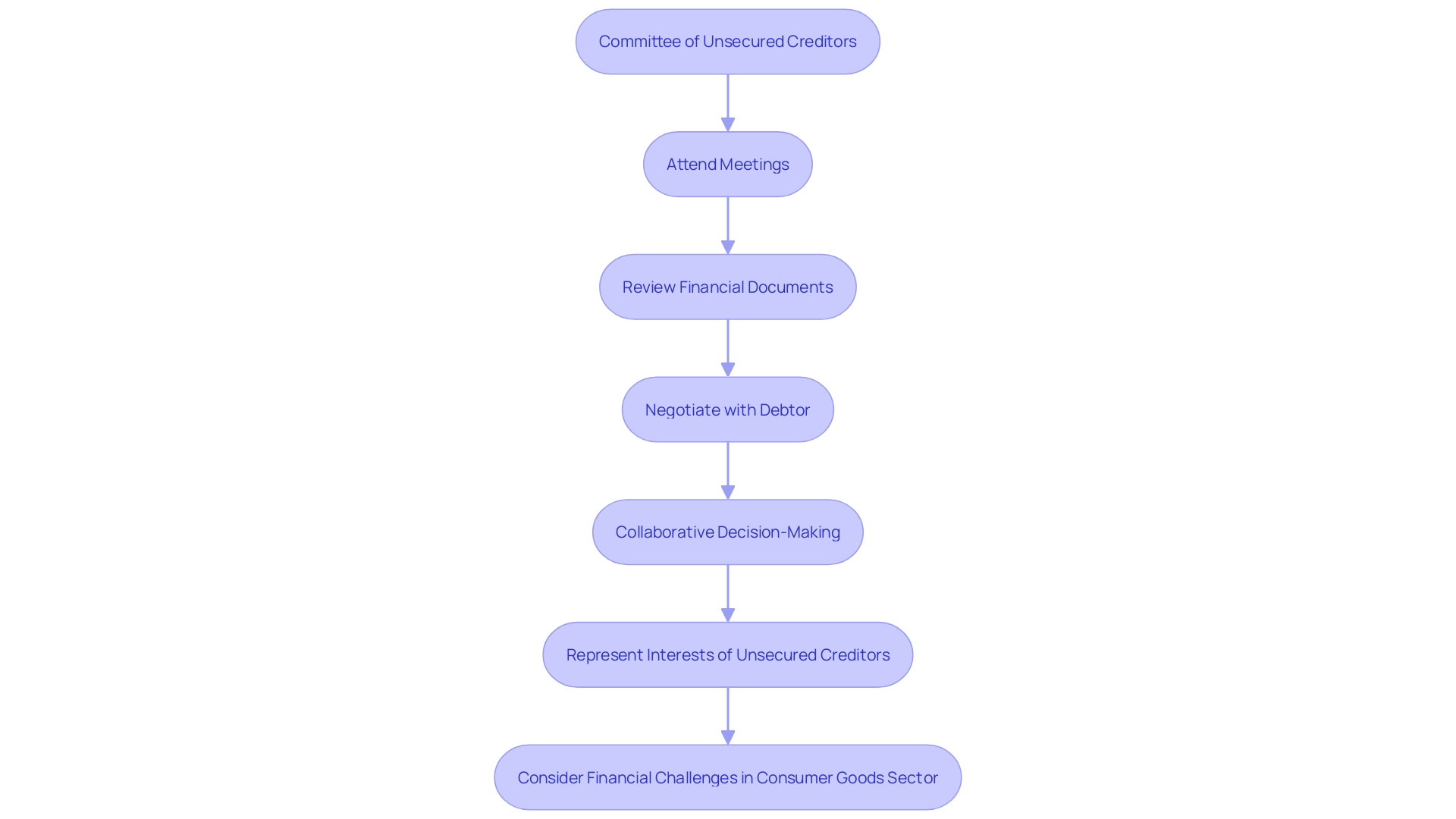
Influence on the Bankruptcy Case and Plan Formulation
The Unsecured Creditor Committee (UCC) plays a pivotal role in insolvency cases by actively participating in the negotiation and formation of the reorganization plan. Their involvement is crucial in shaping the terms that impact the treatment of unsecured claims, ensuring that these claims are addressed fairly and equitably. For instance, in the recent case of a company recovering from financial failure on January 31, 2024, the UCC's support was instrumental in developing a reorganization plan that was overwhelmingly approved by 98 percent of the company's account holders. This plan resulted in over 600,000 account holders receiving more than US$3 billion in cryptocurrency and fiat.
Moreover, the UCC's advocacy extends beyond mere financial considerations. They also have the opportunity to promote public-minded goals, such as preserving employment, protecting the environment, and supporting the local economy. This broader vision for bankruptcy law allows for a wider range of values to be pursued during the negotiation process, potentially reshaping bankruptcy practice for social enterprises.
The committee's input is not only crucial for the reorganization plan but also for the overall recovery of the debtor. By advocating for fair solutions, the UCC ensures that the interests of creditors are protected while facilitating the debtor's path to recovery. This balanced approach is essential, particularly given the rising number of insolvency filings. According to data from the Administrative Office of the U.S. Courts, yearly insolvency filings rose to 486,613 in the year ending June 2024, a significant increase from the previous year's 418,724 cases. Business filings alone saw a 40.3 percent rise.
In conclusion, the UCC's active participation and advocacy are essential in navigating the complex landscape of bankruptcy, ensuring that both the debtor and creditors are fairly represented and that broader societal goals are also taken into account.
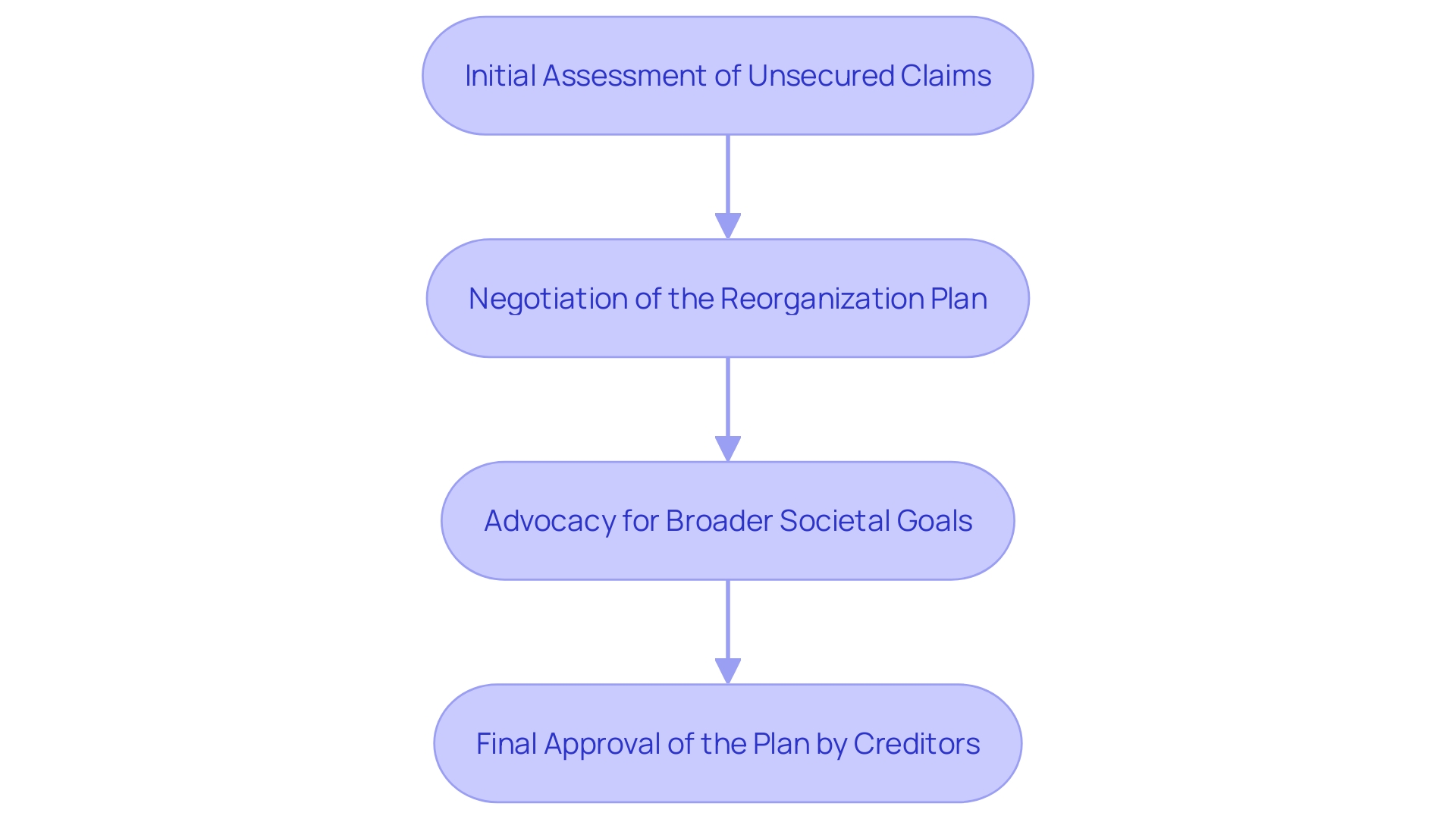
Benefits and Considerations for Participating in the Committee
Engaging in the group of Unsecured Creditors provides various advantages, including a coordinated method for claim recovery and improved leverage in discussions with the debtor. A prime example is the recent reorganization of Celsius, where the Committee played a pivotal role, resulting in over 600,000 account holders receiving upwards of US$3 billion in cryptocurrency and fiat. Moreover, this involvement led to the creation of Ionic Digital, Inc., a new Bitcoin mining company owned by Celsius creditors. Such outcomes underscore the importance of active engagement. However, prospective members must be prepared for significant time commitments and responsibilities, as effective participation is crucial for achieving meaningful results.
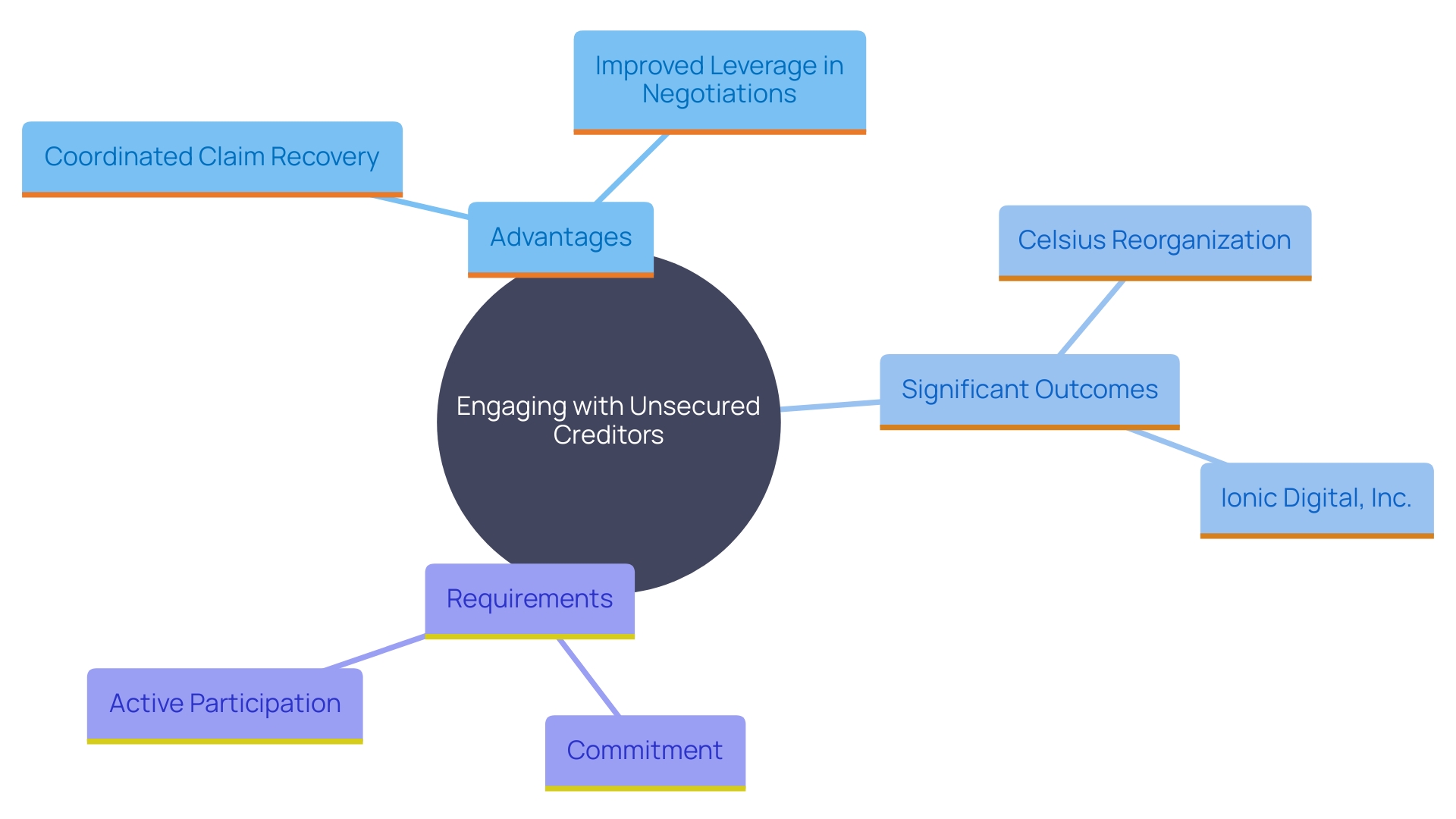
Conclusion
The Committee of Unsecured Creditors stands as a cornerstone in bankruptcy proceedings, fundamentally shaping the landscape for unsecured creditors. By representing their interests and ensuring their voices are heard, this committee plays a critical role in navigating the complex restructuring process. The formation of the committee, overseen by the U.S.
Trustee, highlights the importance of diverse and active participation from creditors, which is essential for robust representation and effective negotiation.
The responsibilities of the committee extend well beyond mere oversight. They actively monitor debtor operations, engage in negotiations, and retain professional advisors to advocate for the best outcomes for unsecured creditors. The fiduciary duties imposed on committee members underscore the necessity for integrity and transparency, ensuring that all actions are taken with the utmost care for the collective interests of those they represent.
The successful outcomes seen in recent cases, such as the Celsius Network, exemplify the significant influence the committee can wield in securing favorable terms and facilitating substantial recoveries.
In conclusion, the Committee of Unsecured Creditors is not just a participant in the bankruptcy process; it is a decisive force that can drive meaningful change and recovery for unsecured creditors. Engaging actively in this committee brings considerable benefits, including enhanced negotiation power and the ability to influence the direction of restructuring plans. As the financial landscape continues to evolve, the commitment to effective representation and advocacy remains paramount for achieving equitable outcomes in bankruptcy proceedings.




